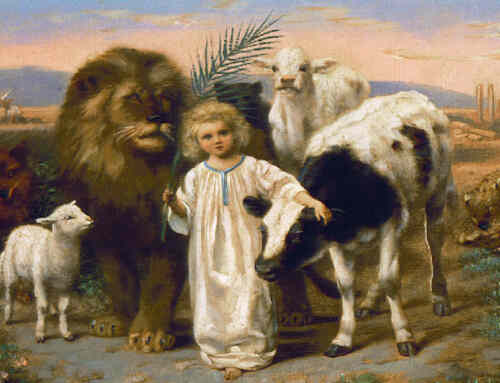When scriptures appear to be unclear, it can often be useful to examine the context, meaning, the verses surrounding an unclear scripture. In this case, the wordings of John 1:18 and John 14:9, when read in isolation, at first can appear to be conflicting.
God is a divine spirit being. People live on the physical plane of reality. Our physical-based senses are not equipped to perceive a divine being like God. The part of John 1:18 that reads “No man hath seen God at any time” reflects this thought. No person, regardless of when they lived or what action they may have taken, has ever been able to see God. However, the surrounding context to these words in John 1:18 reveal that the verse’s meaning is really a declaration about Jesus. John 1:14-16 discuss how the spirit being referred to as “the Word” took on a physical body (“was made flesh”) and became known as Jesus.
Using the earliest and higher quality Greek manuscripts, we believe the correct rendering of John 1:18 is:
“No man hath seen God at any time; an only begotten god, who is in the bosom of the Father, he [Jesus] hath declared Him [God].”
The verses make the point that Jesus was perfectly in harmony with God (he “declared” God), his Heavenly Father who created him. By his own words and actions, Jesus taught mankind, who couldn’t physically see or perceive God, the nature and will of his Father.
John 14 opens with Jesus in the middle of a conversation with his disciples. In verse 1, he knew his disciples believed in God, and Jesus used that belief to encourage them to believe in him also.
In verse 7, Jesus expands on this by telling his disciples that if they knew him (Jesus)—if they understood the teachings he tried to impart to them and if they understood his actions and the principles that drove him—they would in turn understand God’s character and will. The message here is the same as John 1:14-18, that Jesus was so in harmony with God that he was a perfect human reflection of God’s will, and through that reflection, the disciples could “see” (or understand) the aspects of God that He wanted to reveal to them.
The Greek for “seen” goes beyond physical eyesight. The verb exeegasato in “he has declared” means “explained.” Our Lord’s reply, “He who has seen me hath seen the Father” does not mean Jesus was some hypostasis or “form” of the Father, but rather that the most we can appreciate as humans is the character exeegasato of the Father as declared, explained or interpreted through the character of Jesus.
As it was impossible for Jesus’ followers to actually see God, the only way in which they could “see” Him was in the representative sense, through Jesus. Jesus doesn’t merely speak about God—he reveals and interprets God’s nature, character and will with perfect clarity.
In verse 8, Philip, perhaps not understanding Jesus’ meaning, asks Jesus to “show them the Father (God).” Verse 9 records Jesus’ response, which repeats his message that by knowing his (Jesus’) character and heart, so perfectly in tune with God, a person perceives all that a being on the physical plane needs to know to understand God. Jesus reinforces this thought in verses 10-12, where he expresses how God “is in” him, meaning, God’s love, law and will are so ingrained in his character that they are a part of him.
Both John 1 and John 14 contain the same message. People live on a different plane of existence than God, and thus we can’t perceive Him with our physical senses. However, Jesus, who took the form of man and lived a life on the physical plane, was seen and physically perceived by those who knew him. Through the record of the Scriptures, we “see” and know him as well. We can relate to Jesus in a way we cannot directly relate to God. However, because Jesus was in complete harmony with God, he served as a reflection for God’s will. By studying and emulating that example, we can gain a perception of the important characteristics of God that He wants us to understand.
Additional Resources:
Christian Questions Podcast
John 14:6—How Is Jesus ‘the Way’?
John 14:6—How Is Jesus ‘the Truth’?
John 14:6—How Is Jesus ‘the Life’?














